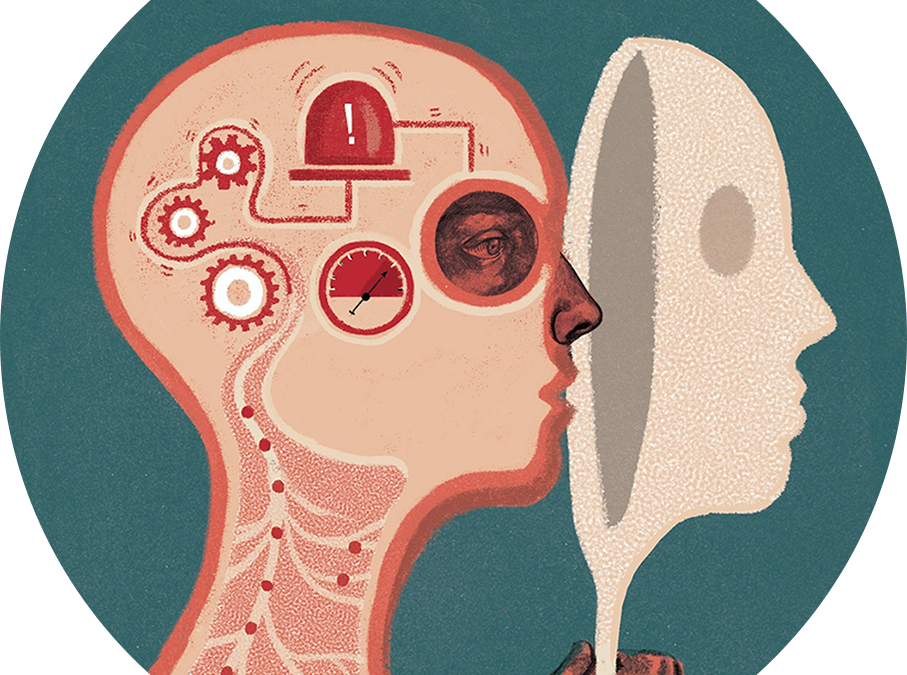I’m being playful with the title here, because – as many of you well know – feeling emotion is not the strong suit of Star Trek’s king of reason, Dr Spock.
However, we live in a world that for several centuries has favoured Spock’s reality; where reason and logic are valued more highly than emotion.
Many newer models of emotion argue that rationality stems from emotion, and that emotion stems from bodily senses. We now know that emotion is central in decision-making. Frustratingly for Dr Spock, humans do not make purely rational decisions – it’s simply not how we work.
Here are three exciting understandings about the connection between our bodies, our feelings and our thoughts:
ONE: Emotions Underpin Reason
It’s often argued that the writing of Rene Descartes in the 17th century provided the basis for this separation of reason, a higher function of the mind, and emotions, seen as a more base response in the body.
In his 1994 book, Descartes’ Error, neurologist Antonio Damasio, presents the “somatic marker hypothesis”, a proposed mechanism by which emotions guide (or bias) behaviour and decision-making, and positing that rationality requires emotional input.
Contrary to mind/body dualism, Damasio has been very influential in helping develop the science that puts emotion and the body at the root of human experience. He is clear that it is not possible to make decisions without being able to experience emotion.
TWO: Emotions are Embodied Phenomena
The last two decades have seen exciting developments in our understanding of emotion based on neurobiological research.
Research into the neurological connections of the heart (Armour 2008) and Heart Rate Variability (Watkins 2008 and 2012) shows that the functioning of the heart frequently determines our ability to think clearly.
The body and mind speak and it is a two-way conversation. A large part of this conversation is transmitted via emotions. Candace Pert (1999) calls the informational chemicals of the neuro-endocrine-immune system the ‘molecules of emotion’.
Emotions are embodied phenomena. The surge of energy you feel when adrenaline is secreted is frequently coupled with the emotion of anxiety. The connectedness and empathy you feel when oxytocin is secreted is frequently coupled with joy. The different pieces of music played by the orchestra of cells secreting informational chemicals in our bodies are different emotions.
Emotions emerge from the internal environment of the body. They are a perception based on patterns of reflexes, secretions and musculoskeletal tone.
THREE: Relational Touch and Body Awareness Send Safe Information to the Brain
When we see a bear, we start running. It’s only as we’re running that we experience the emotion of fear and then we understand what is happening.
The body responds first, triggered by old unconscious parts of the brain, and cognition catches up later as changes in body physiology are fed back to the insula and then the neocortex. Understanding happens after action, thinking is sidestepped, as conditioned and unconditioned responses to threat quickly take over our bodies.
Triggered by old danger-sensing networks in the brain (‘the salience network’ that includes the amygdala) the body physiology changes to mobilise (fight-or-flight) or immobilise (freeze). The change in body physiology always involves emotion – in this case, most often fear.
Through relational touch – safe, effective bodywork we can work with this complex body-mind interaction to both create a sense of safety, as well as understand our emotional states.
One of the quickest pathways from the body to the brain is the snappily titled ‘lamina 1 spinothalamocortical pathway’. This pathway is uniquely well developed in primates and carries interoceptive information from the body tissues. The sensory vagus also carries interoceptive information from the organs.
Both these interoceptive pathways are essential to the experience of emotion. The relational touch and body awareness we can experience through biodynamic craniosacral work sends lots of novel, safe interoceptive information back to the brain. We could say body awareness wakes up our sense of the physiological state of the body and it gives insight into our emotional feelings.
If you’d like to explore Biodynamic Craniosacral therapy, you can find an intro event below.
Upcoming Trainings:
Biodynamic Craniosacral Therapy (BCST):
The Art of Touch 2 Year Training: London – starts Oct 2024
The Art of Touch 2 Year Training: Galway – starts Mar 2024
The Art of Touch 2 Year Training: Waterford, Ireland – starts Oct 2024
Art of Touch Craniosacral intro evening:
London: Coming soon…
Galway: 7 Jan, 1 Feb
Tension and Trauma Releasing Exercises (TRE®):
TRE intro days:
London: 22 Jan, 11 Mar, 20 May, 15 Jul, 23 Sep, 18 Nov
New TRE 1 year Training
London: June – Oct 2024


